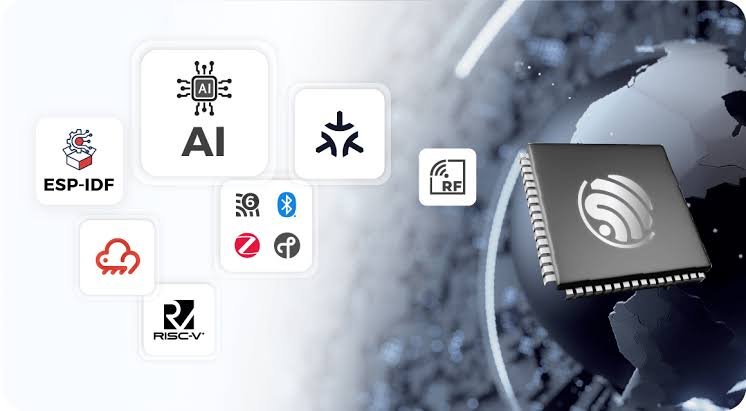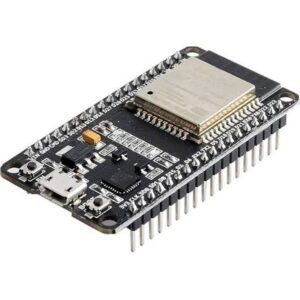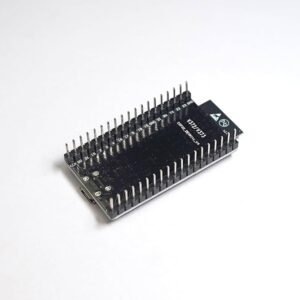
Introduction to Espressif’s New Wi-Fi 6E Chips
Espressif Systems, a prominent player in the semiconductor industry, has recently announced an innovative line of tri-band Wi-Fi 6E chips. This development marks a significant advancement in wireless communication technology, enhancing connectivity options in various applications. Wi-Fi 6E extends the capabilities of Wi-Fi 6 by utilizing the 6 GHz band in addition to the traditional 2.4 GHz and 5 GHz bands. This additional spectrum allows for higher throughput, reduced latency, and improved performance in dense environments, catering to the increasing demand for robust wireless connectivity.
The significance of tri-band support in these chips cannot be overlooked. By leveraging three frequency bands, users can experience multiple simultaneous connections with enhanced performance, particularly in scenarios where many devices are connected. This is particularly pertinent in households and enterprises increasingly reliant on internet of things (IoT) devices, where bandwidth demands are consistently rising. The tri-band capability facilitates the distribution of network load, minimizing congestion and optimizing available bandwidth for all connected devices.
Espressif’s new Wi-Fi 6E chips boast impressive capabilities, offering data transmission speeds of up to 2.1 Gbps. This performance allows for seamless 4K streaming, immersive gaming experiences, and efficient smart home management. Additionally, the technology promises improved energy efficiency, which is crucial for battery-powered devices. The integration of advanced features such as improved security protocols and better interference management positions these chips as a vital component in the evolution of wireless technology.
Through this groundbreaking announcement, Espressif Systems highlights its commitment to enhancing connectivity solutions, catering to the needs of modern applications. The forthcoming sections will delve deeper into the features, applications, and the implications of these cutting-edge Wi-Fi 6E chips.
Technical Specifications and Features
Espressif has recently unveiled its latest tri-band Wi-Fi 6E chips, which stand out for their impressive maximum data rates of up to 2.1 Gbps. These chips incorporate advanced technology tailored for high-demand applications, ensuring efficient and rapid data transmissions. The tri-band system divides the wireless spectrum into three distinct bands: 2.4 GHz, 5 GHz, and 6 GHz. This configuration not only alleviates congestion associated with dual-band systems but also enhances the overall network performance, providing broader bandwidth and increased capacity for multiple connected devices.
In terms of processing power, these chips are equipped with robust processors capable of handling demanding tasks seamlessly. This capability allows for a smoother user experience, particularly in environments where numerous devices compete for access to bandwidth. Users can expect minimal latency and uninterrupted service, even in high-traffic situations, making these chips suitable for applications ranging from smart home devices to high-definition streaming services.
The range capabilities of the tri-band Wi-Fi 6E chips further cement their position as a valuable technology in contemporary networking solutions. By leveraging the 6 GHz frequency, these chips significantly boost the transmission capabilities, enabling longer ranges and overcoming typical barriers present in dual-band configurations. This improvement is particularly beneficial in larger homes or commercial spaces where maintaining a stable connection can often be challenging.
Moreover, the application scenarios for these advanced chips are extensive. They are ideal for a plethora of devices, including routers, smartphones, laptops, and IoT gadgets, all of which can take advantage of the lightning-fast speeds and extensive coverage offered by a tri-band network system. As a result, consumers and businesses alike stand to benefit greatly from adopting this innovative technology.
Market Impact and Competitive Landscape
The introduction of Espressif’s tri-band Wi-Fi 6E chips, capable of delivering speeds up to 2.1 Gbps, is poised to significantly reshape the market for wireless communication technology. With the increased demand for high-speed internet and seamless connectivity, these chips will likely play a crucial role in enhancing consumer experiences in various sectors, including smart homes, IoT devices, and telecommunications.
One of the most notable impacts of this product launch is its potential to influence competitive dynamics within the technology space. Major players in the wireless chip market, such as Qualcomm, Broadcom, and Intel, have established their dominance with established product lines. However, Espressif’s entry introduces a formidable competitor that may drive innovation and potentially lead to more competitive pricing in the industry. The unique selling proposition offered by Espressif’s technology, particularly its tri-band capabilities, may allow the company to capture market share, particularly among manufacturers focusing on next-generation devices.
Additionally, as businesses and consumers alike begin to understand the advantages of Wi-Fi 6E—especially in environments requiring high data throughput—the demand for these advanced chipsets is projected to soar. Industry analysts anticipate a surge in adoption rates, especially as smart cities and connected devices proliferate. This increased consumer demand may compel existing manufacturers to accelerate their R&D efforts and deliver enhanced products that can match or surpass the capabilities of Espressif’s new offering.
Furthermore, the competitive landscape is expected to evolve as new entrants may seek to capitalize on the burgeoning need for high-speed internet solutions. As demand for enhanced bandwidth continues to grow in both residential and commercial sectors, it is clear that Espressif’s tri-band Wi-Fi 6E chips will not only influence their products but also encourage rival companies to innovate, ultimately benefiting consumers by providing more choices and better technologies.
Future Prospects and Innovations
Espressif’s announcement of tri-band Wi-Fi 6E chips, boasting an impressive 2.1 Gbps capability, marks a significant milestone in the evolution of wireless technology. This advancement is not only a testament to the company’s commitment to innovation but also reflects the growing importance of high-capacity networks in today’s digital landscape. As the demand for faster and more reliable internet connectivity increases, the adoption of Wi-Fi 6E is poised to transform various sectors, including healthcare, agriculture, smart homes, and industrial automation.
The integration of Wi-Fi 6E into smart home devices and IoT applications represents a new horizon of possibilities. Devices that leverage this latest standard can communicate with each other more efficiently, enabling seamless interactions and improved performance. For instance, smart home systems utilizing these advanced chips are likely to support higher bandwidth applications like 4K video streaming and virtual reality, thereby enriching user experiences. As a result, consumers can expect a more integrated and responsive environment that optimizes their daily activities.
Furthermore, enterprises can benefit from this technology by deploying Wi-Fi 6E in their operations, allowing for enhanced connectivity strategies that can handle a larger number of simultaneous devices. This capability will be especially vital in densely populated urban areas where network congestion is often a concern. Espressif’s innovation positions them as a key player in shaping the future of high-performance networking solutions.
Ultimately, as Wi-Fi 6E gains traction, it is expected to pave the way for new advancements in networking technology. The potential for integration with other emerging technologies, such as artificial intelligence and machine learning, provides a fertile ground for both product developers and end-users. The trajectory of Wi-Fi 6E suggests not only better connectivity but also smarter ecosystems that enhance both consumer and business interactions, reflecting a future where seamless connectivity is the norm.
